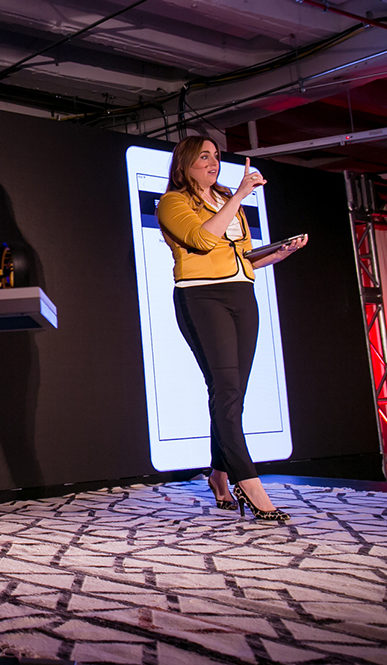The Right Microphone for Your Presentation
If you’ve ever been to film school, you quickly learned that a film with great audio and poor camera work was called art, and a film with artistic camera work and poor audio was called garbage.
It would be great if the same rule applied to live presentations, but it doesn’t. Audio is 80% of the audience impact. Attention retention drops significantly when the person presenting uses the wrong microphone during their presentation. We know ours does. Do you agree? If so, what’s the solution? Read on for some hot tips to up your audio game.
Let’s get right to the point.
From experience, people generally know of two types of microphones; handheld and clip-on. What they don’t know is the type of “pickup” that’s inside of those microphones. Much like in dating, knowing solid “pickup” lines is key to success. Okay… that connection was a stretch but hear us out.
Let’s begin with the infamous “clip-on” microphone. Have you ever sat through a talk and it seemed like this mic (usually clipped near the speaker’s naval) captured more “room” noise than the presenter’s voice? Well, that’s for two reasons; poor mic placement and an “omnidirectional” mic pickup. FYI: Lavaliers (or clip-on) microphones are often used in video/film recording situations where live sound reinforcement and gain before feedback are not a concern.
Fact: Most clip-on (lavalier) microphones have omnidirectional pickup patterns. It’s rumored that that this type of pickup is great for ANY occasion… but it’s not. We’ve ALL sat through the nasty feedback and hissing produced by these microphones. Oh, the agony! By design, this pickup pattern does an excellent job of capturing spoken word…and any other sounds occurring at the same time; door creeks, that dude in the third row who keeps sniffing, and that A/C fan that keeps squeaking. This type of pickup can be found in handheld microphones too, but the effects aren’t as egregious.
All in all, don’t be that presenter! Get the RIGHT microphone for any presentation anywhere, anytime. Stay away from any microphone that offers an omnidirectional pick-up pattern.
So, what’s the BEST type of pickup pattern?

From experience, there are two: Directional and Cardioid.
DIRECTIONAL PICKUP: This pickup is generally found within what’s affectionately known as a “shotgun” microphone (which looks more like a long stick). This pickup will capture the audio from whatever it’s pointed towards. You may have seen these microphones on the sidelines during your favorite professional sporting event, capturing very specific audio of coaches or players during gameplay.
CARDIOID PICKUP: Imagine this pickup as being heart-shaped. It’s most sensitive in the front, or very top of the mic. The sides and bottom of the microphone are less sensitive and will capture less sound. These microphones are widely used by professional singers during live concerts.
What does this mean to you? We’ve ruled out the use of a “clip-on” mic (due to its inferior omnidirectional pickup pattern and tendency to be carelessly misplaced on the presenter’s body), so we’ll need something to replace it. Here at automätik, we highly recommend a “directional” headset microphone. DPA makes a great product: DPA 4088-F. The use of a headset solution ensures that the pickup remains near the speaker’s pie hole, not near the speaker’s stomach, picking up the grumblings of their bad lunch decision (spicy enchiladas, anyone?)
As for a handheld solution, we highly recommend the SHURE ULX2/Beta 58. This microphone has a “supercardioid” pickup pattern. Basically, the microphone will do an excellent job of picking up what’s spoke directly into the pick-up, with little environmental interference. In other words, the speaker is free to move around without the fear of picking up room noise or creating feedback.
“Well I have a microphone and you don’t, so you’ll have to listen to every word I have to say.”
– Adam Sandler, The Wedding Singer
Now you have an informed way to make the BEST decision when purchasing a microphone for your next presentation. If you really want to stay at the top of your game, purchase one of each, so you are even better prepared for your next speaking engagement.